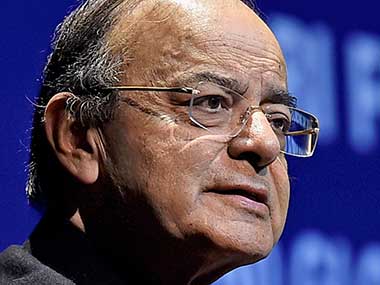The central government has unveiled the Union Budget for the year 2018-19. The last two Budgets put the focus correctly by giving thrust to rural development, agriculture and infrastructure, but the bureaucratic red-tape has been an impediment. We have a long way to go and we need to evolve a new model — the "distributed growth model".
Throughout these decades, we have chased the ever-elusive "double digit growth", but we won't achieve that with the current approach.
"Too many economists spoil the budget"
We had a world-class economist running the country for a decade, we had the best economists running the Reserve Bank of India and the erstwhile Planning Commission, and we still could not achieve double digit growth, and floundered. So it's time we take a fresh look at our economic approach. A mere change in the interest rates have not done anything, and will not. Economy is not about tax collections, interest rates or money supply alone, it is much more.
"Text book economists" do not understand the country's complexities, and neither they do good to the economy, or to economics. Also the general perception is that only 3 percent of the population pays taxes. But while only 3 percent may be paying direct taxes, every citizen of India pays indirect taxes when s/he purchases a product from the market. All the more so, with GST implemented.
So to use this reason of low tax payer's base is wrongfully placed.
It's time we considered a model that leads to growth which percolates downwards and spreads wide, that which I call the 'Distributed Growth model'. How do we make it happen?
Let’s look at the following data:
• There are about 250 million households in India and of these, about 25 percent are below the poverty line. So, we need to continue to enhance their earnings with 'Mission 62.5 million households'.
• The number of cultivators and agricultural labourers added together make up around 263 million, or 22 percent of the population. Investment in irrigation, agri-allied sectors, and in setting up forward linkages with markets in towns, and for exports is the need. A special "agri-infra and irrigation mission" project is needed to fire the most important engine of our growth: Agriculture.
• As per the annual report of the MSME Ministry (2015-16), the MSME sector employs about 80 million people in about 36.1 million units. Of these, there are 20 million units in rural areas, while there are 2.6 million women enterprises. MSME needs to expand more to semi-urban and rural areas and engage youth and women entrepreneurs, and also boost MSMEs expansion in food processing, agriculture based and allied segments, high-end tooling, IOT and niche manufacturing. MSME is where massive employment and income gets generated. It will not only ensure success of 'Make in India', but more importantly, as the MSME employees themselves are customers of 'Make in India', it will also create "customers" for these products. With such customers available, 'Make in India' will be a grand success. MSME is the second engine of the economy that needs to be fired up.
• Six states — Bihar, Uttar Pradesh, Rajasthan, Madhya Pradesh, Jharkhand and Chhattisgarh — account for 42 percent of the population and 56 percent of the population growth. These are all BJP-ruled states. We need to invest more in uplifting the economy of these states. Lower growth in these states can drag down the overall growth of the country.
• Retailers number 13 million in India, and we need to carefully tread on FDI in online and retail segments. Hundred percent investment in retail for daily use products may be myopic, and policymakers need to be careful. We need to promote an innovative model which brings about investment in online and offline retail, and helps grow "mom and pop stores" as well.
• Tourism: India has about 10 million tourist arrivals and this can increase by five times. Imagine the number of hotels and convention centres, taxis, guides etc. that can come up. And the best part is that all this can be done without any government investment, as the private sector will want to invest seeing the business potential. India has so much to offer to global and domestic tourists, and the government must focus on tourism as a job creator and a foreign exchange earner.
Health and education
A recent study had revealed that 50 million people in India are below the poverty line due to costs of healthcare. Also, it is a known fact that most of the "educated" people aren't "skilled" enough to do the jobs that the country needs in an evolving economy.
Hence, education and health needs investment. If the workforce is not healthy and competent, how can the economy be strong? In fact, anecdotally (since I am not an economist by training), I would take the liberty of stating that GDP growth would be equal to the GDP spends on education and health.
Our healthcare and education systems are in shambles and they needs massive investment. For achieving "distributed growth model", investment in health and education are a precondition.
The strongest thing about the Indian economy is the 1.34 billion consumers who run the consumption story (growth engine) for the country, and we add 18 million new consumers every year. With more opportunities for consumers from agriculture, MSME and tourism, assuring them with quality health and education will be key. We will soon fire the economy to grow 10 percent a year, and that too, sustainably.
I can see foreign trained economists keep warning India about the fiscal discipline. But if investments are going in areas outlined above and not in opex, we need not worry. Even if the fiscal deficit reaches 5 percent, investments in these sectors will pay back, and our economy will be among the third largest in the world in a decade. The US is a case in point. It is too big an economy and though its fiscal arithmetic is baffling, does it worry about its ratings or deficit?
In oil-rich Gulf countries, GDP and GDP per capita appears fantastic as statistics, but since the oil fields are in the hands of a few royal families, the wealth is concentrated in these few hands. Recently, the annual Oxfam survey has found that the wealthiest 1 percent Indians garnered 73 percent of the wealth created in 2017. This is due to the 'Concentrated Growth model'. So growth alone with not suffice, and we need "distributed growth". In the "distributed growth" model lies the answer. India should move to this model before the gap between the haves and have nots increase.
What the policy makers must aim is to enhance the income and money in the hands of consumers by creating more avenues to work, earn and spend. This will happen if we invest in agriculture and value addition in allied agriculture-based industries, MSME, tourism, infrastructure, health and education.
Lastly, lest we forget, the electorate will evaluate the Modi government's performance on health, education, employment, electricity and inflation. These hold the key to the 2019 general elections.
Good economics is therefore long term politics.
The author is a leading public policy expert who had drafted the election manifesto of the BJP under MM Joshi ahead of the 2014 general elections
Published Date: Feb 01, 2018 12:00 PM | Updated Date: Feb 01, 2018 12:00 PM




















